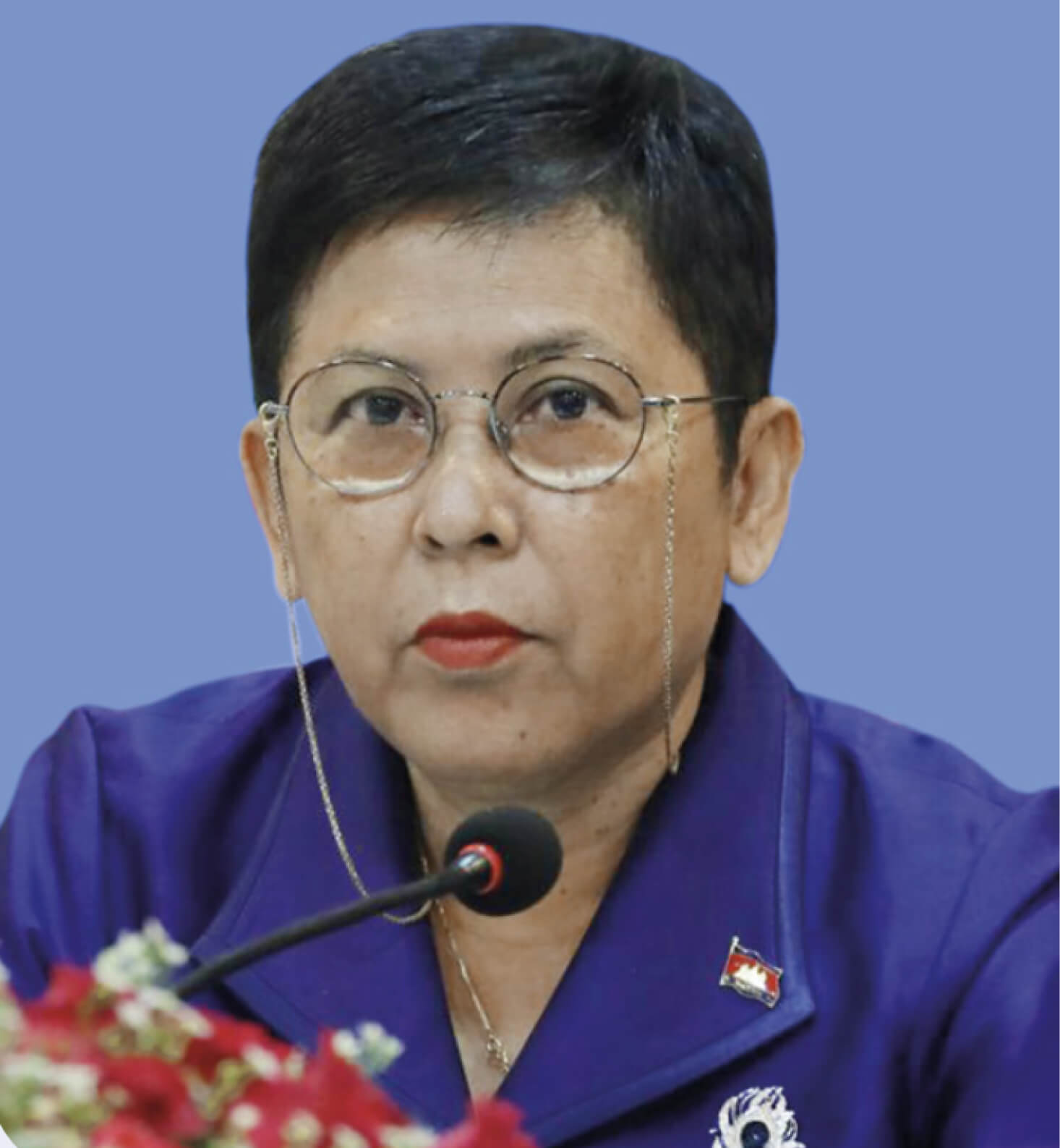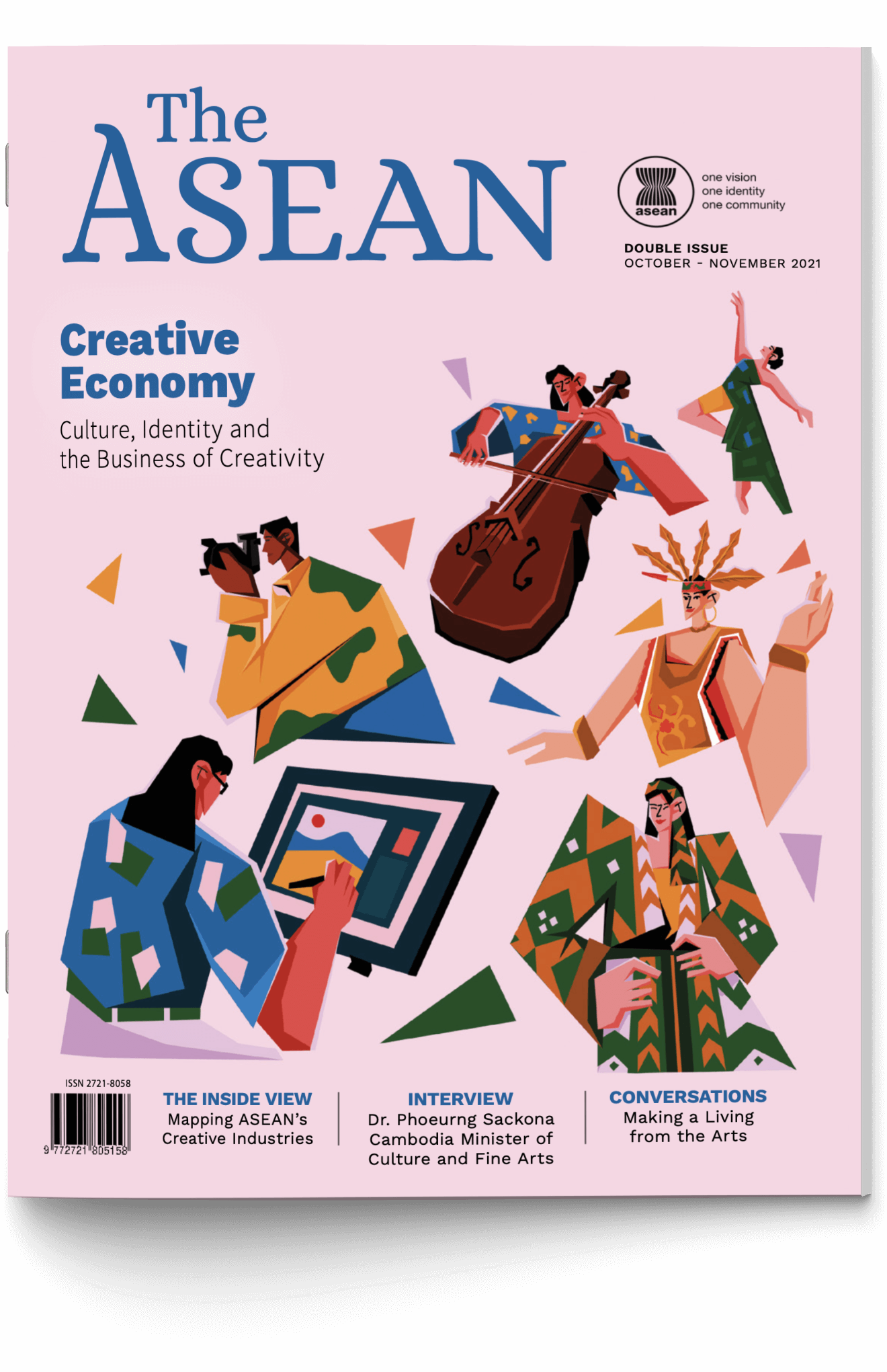
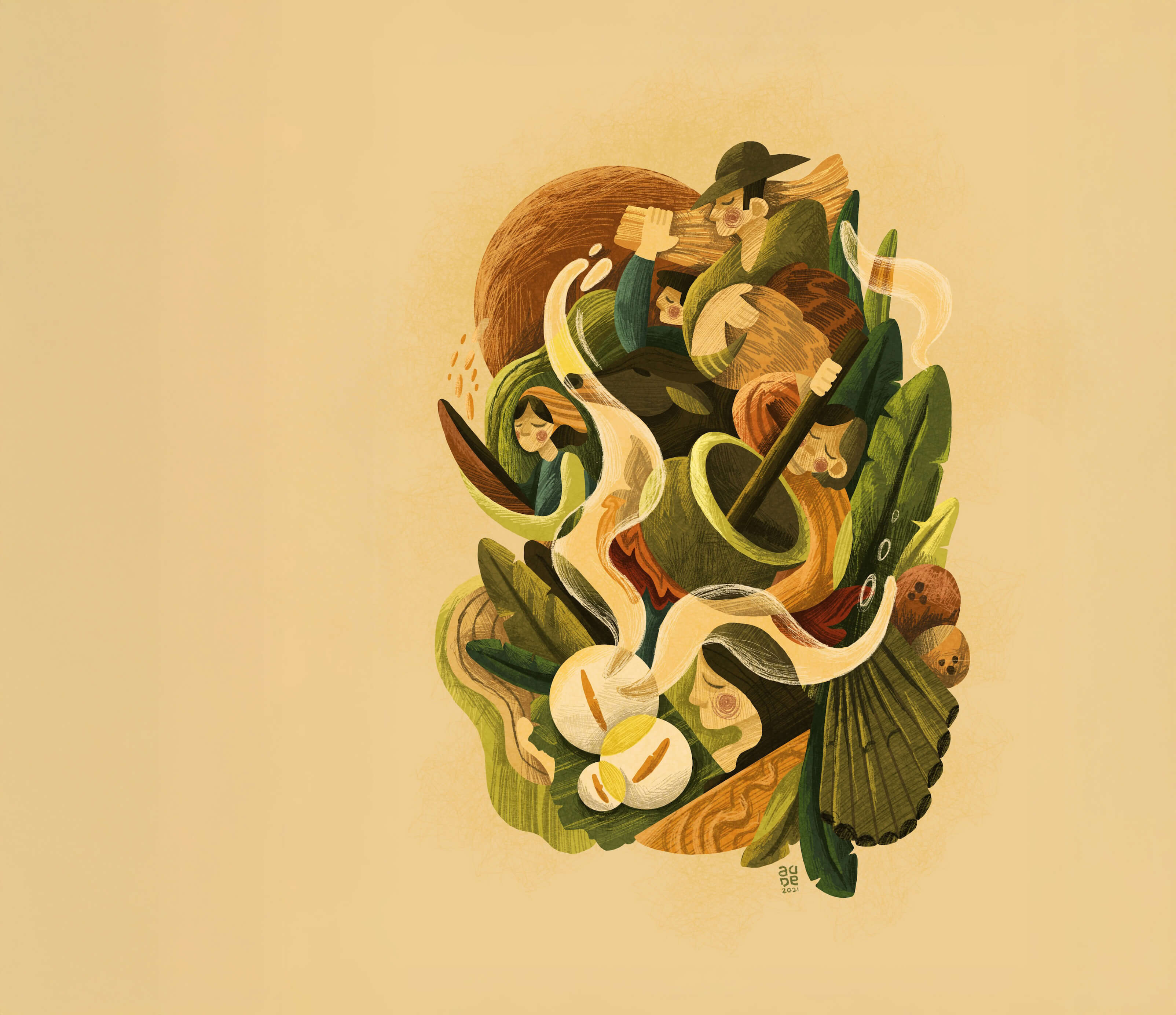
Subscribe to our newsletter:

Double Issue 17-18
October-November 2021
Creative Economy
Culture, Identity and the Business of Creativity
Download:
Inside this Edition
Themes
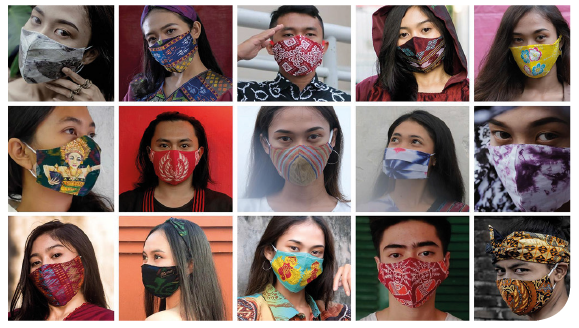
1 Oct 2021
Culture
Beyond Global Reports and Statistics: How Should We Support Local Creative Industries?
The power of the creative industry has been much talked about globally over the last few decades with a show of promising statistics. Its capacity to generate high GDP and jobs has been underscored to encourage government investment in the sector.

14 Nov 2021
Culture
Globalisation of Music: The Road to Cultural Diversity and Understanding?
The Creative Economy Programme of the United Nations Conference on Trade and Development (UNCTAD, n.d.-a) describes the creative economy as “the knowledge-based economic activities upon which the ‘creative industries’ are based.”
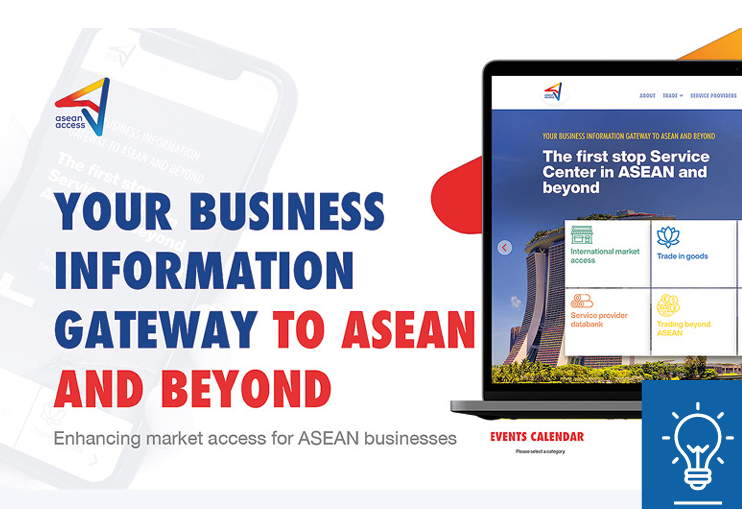
14 Nov 2021
ASEAN Identity and Community Building
From Local to Global: A New Portal Taking Small and Medium Entrprises Across Borders
ASEAN businesses need support to internationalise and engage in trade across borders and have a positive impact on economic growth. It is a wellknown that businesses that engage internationally can grow faster, experience higher turnover, adopt technological capabilities, and increase wages. In turn, their competitiveness improves in global value chains as well as in domestic markets.

19 Nov 2021
Culture, Labour and Future of Work
Mapping the Readiness of ASEAN’s Creative Ecosystem
There is a growing interest in the socio-economic contribution of the creative economy. It is spurred by the technological and digital transformation happening worldwide at an unprecedented rate and the increasing shift from an industrial to a knowledge-based economy where creativity and innovation are becoming critical.
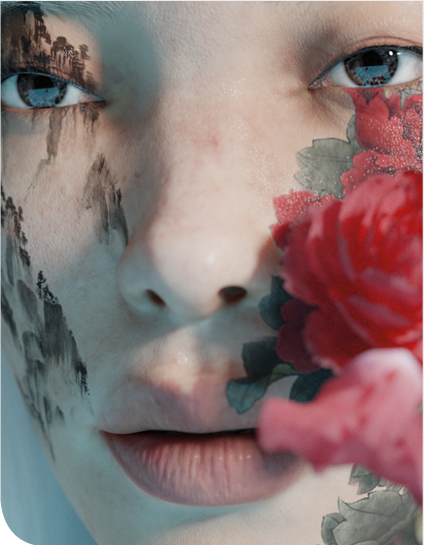
19 Nov 2021
Culture, Labour and Future of Work
The NFT Art Craze Reaches Southeast Asia
NFTs or non-fungible tokens are creating a buzz in the art world and creatives in Southeast Asia are buying in. They are latching on to the craze, experimenting with their digital work, and gearing up to take the NFT scene by storm.

19 Nov 2021
Culture, Labour and Future of Work
Thai Creative Industries In Flux
The United Nations Conference on Trade and Development (2010), which has been instrumental in promoting and analysing creative economies all over the world through its Creative Economy Program, described the creative economy (CE) as “an evolving concept based on creative assets potentially generating economic growth and development.”

19 Nov 2021
Culture, Labour and Future of Work
Indonesia: When Creative and Informal Economies Intersect
Agus is a design student in one of the oldest design schools in Indonesia, located in Bandung City, West Java province. Like other design students and professional designers in this city, Agus came looking for a small metal workshop to complete an assignment: a set of home decor products. He hired a metal craftsman to build a prototype. The prototype, built through a simple process, was finished in less than a week.

19 Nov 2021
Culture
Are Traditional Museums and Galleries on the Brink of Extinction?
For many of us who have yet to see Picasso’s Guernica, Yayoi Kusama’s Infinity Mirror Rooms, or any of the other celebrated masterpieces up close, they are now within our reach. More art museums and galleries are migrating their collection into the digital realm, the shift primarily driven by the ubiquity of digital technology and accelerated by the COVID-19 crisis.
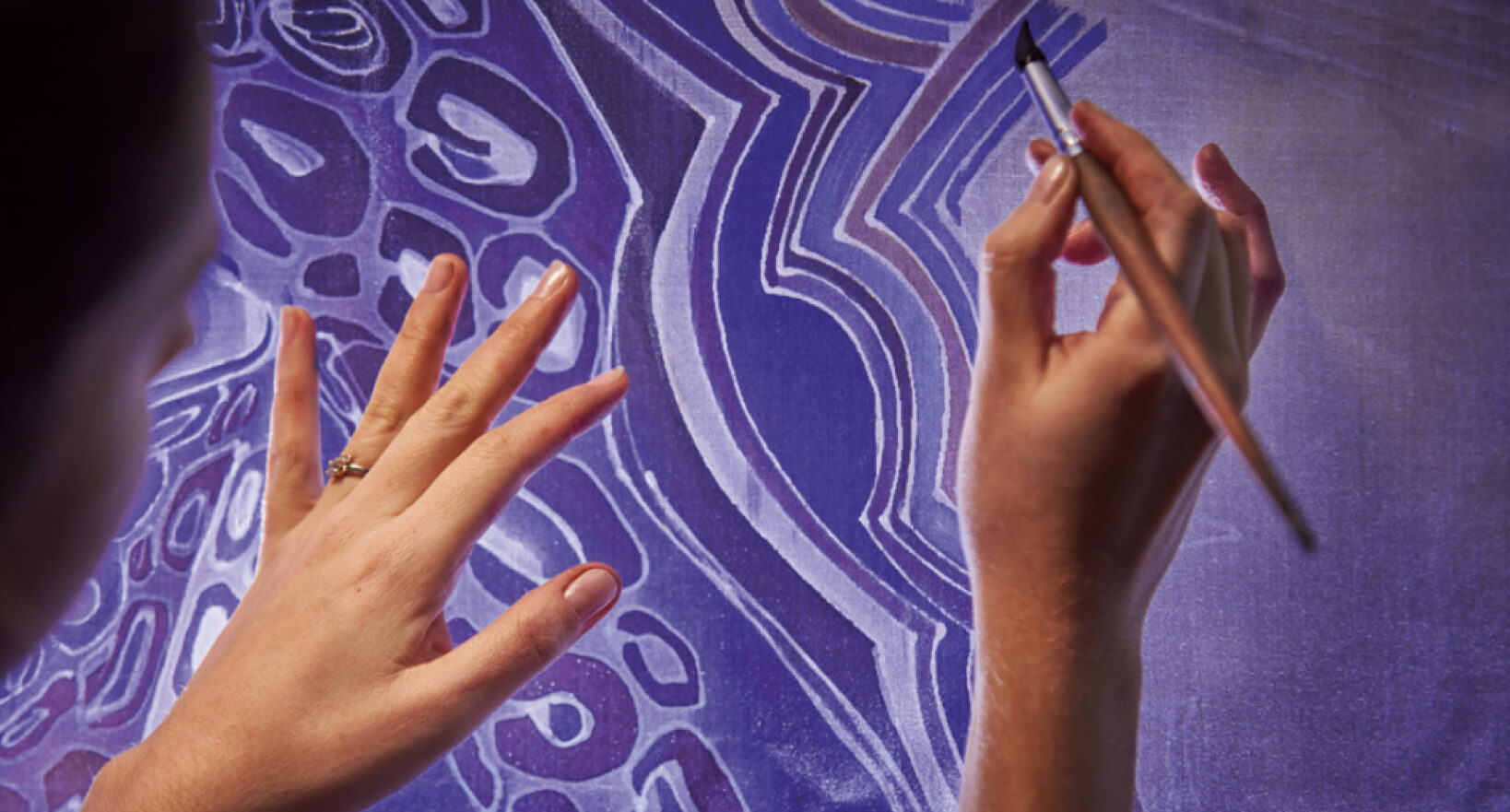
1 Mar 2022
ASEAN Identity and Community Building, Social Protection, Youth
ASEAN at A Creative Turn
What is the creative economy? The term invariably evokes multiple meanings, often seen as the nexus of various creative fields, including the arts and culture, science and technology, business and trade. At its root, the creative economy deals in ideas and money (Howkins, 2001).

14 Apr 2022
Culture
Singapore By Design – A Look At The City-State’s Thriving Creative Economy
Creativity is part of Singapore’s DNA and has always been intertwined with our national development. In a 2018 speech, our Prime Minister, Mr. Lee Hsien Loong, noted: “Singapore is a nation by design. Nothing we have today is natural or happened by itself.”

14 Apr 2022
Culture
Supporting the Creative Economy for Sustainable Development in Southeast Asia
The creative economy has the potential to not only strengthen the expansion of global value chains, increase digital adoption among creative small and medium-sized enterprises (SMEs), fuel the export of cultural goods and creative services, and foster ownership through local engagement, but also contribute to the overarching goal of sustainable development. The global market for creative goods increased considerably from 436 billion US dollars in 2002 to 964 billion US dollars in 2015 (UNCTAD, 2
Interviews
Conversations
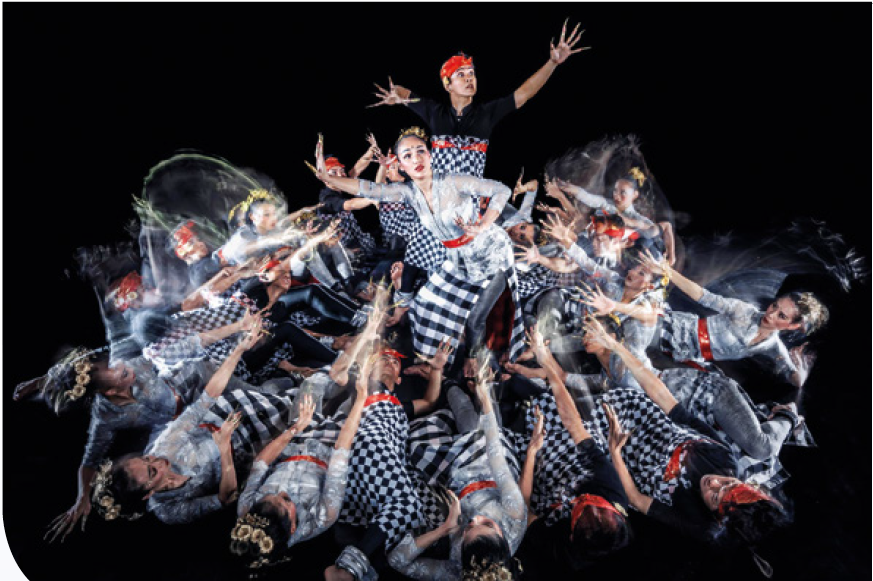
1 Oct 2021
Culture
EKI Dance Company Soaring to New Heights: Tradition Meets Modernity
In 1996, Rusdy Rukmarata and his wife Aiko Senoesenoto founded Eksotika Karmawibangga Indonesia or EKI to nurture young dancers and enable them to earn a decent living.

1 Oct 2021
Culture
Glenn Sevilla Mas
Glenn Sevilla Mas has been with the theatre arts program of the Ateneo de Manila University and its theatre company, Tanghalang Ateneo (TA), for more than 15 years. He was TA’s artistic director for four years and now serves as coordinator of the program. He is an award-winning playwright whose works often have gritty plotlines and tend to draw inspiration from his hometown of Antique. He wrote “Rite of Passage,” a coming-of-age play, while completing his master’s degree in playwriting at the Ca
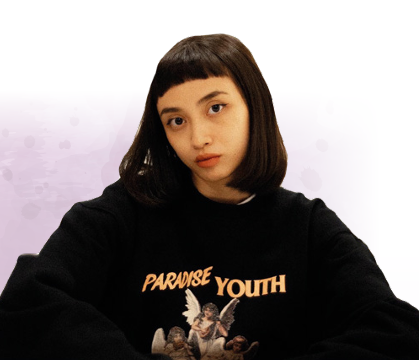
19 Nov 2021
Culture, Labour and Future of Work
Erin Dwi Azmi
Digital technology has been transforming the world of art since the 1960s. Artists are leveraging the power of technological innovations to explore new forms of artistic expression and create engaging digital art experiences. Digital transformation in the art field became more evident during the pandemic, as artists were pushed to expand their work into the digital realm.
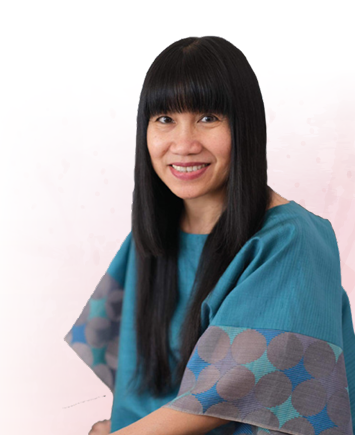
19 Nov 2021
Culture, Labour and Future of Work
Viengkham Nanthavongdouangsy
Born into a family of weavers, Viengkham Nanthavongdouangsy learned the craft at an early age. Through her passion for weaving and dedication to maintain the family legacy, she became a master weaver and a leading fashion designer in Lao PDR. She has also published several books on Laotian textiles and weaving culture. Vientiane-based Viengkham established her own house of Lao textile and fashion named KHANG in 2015, through which she employs and empowers more than 30 women weavers while promoti

19 Nov 2021
Culture, Labour and Future of Work
Thao Vu
In 2012, Thao Vu started her sustainable fashion brand, Kilomet109, a local label that prides itself on applying traditional methods into contemporary design and localising its supply chain. She aimed to set an example for other companies to follow. Kilomet109 is the only label to grow its own textiles in collaboration with local artisans from various ethnic minority groups across Viet Nam. The company is involved in the whole production process from beginning to end. Thao has been collaborating
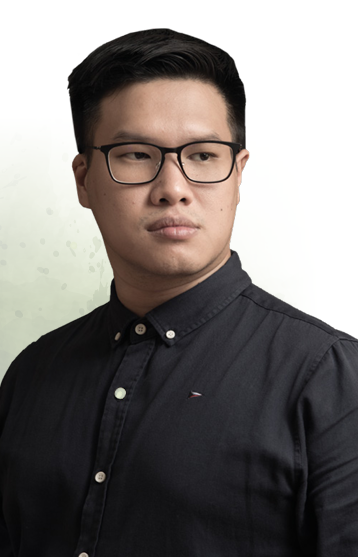
19 Nov 2021
Culture, Labour and Future of Work
Joshua Irwandi
Freelance documentary photographer Joshua Irwandi became the talk of the town when his photograph of a solitary plastic-wrapped corpse of a suspected COVID-19 victim in an Indonesian hospital was published by the National Geographic in 2020. “The Human Cost of COVID-19” photo quickly went viral and sparked a controversy in Indonesia. For this image, Joshua was nominated as a finalist of The 2021 Pulitzer Prize in Breaking News Photography. Joshua pursued his graduate studies in photojournalism a

19 Nov 2021
Culture
Mike Alcazaren
Miguel “Mike” Alcazaren wears many artistic hats— animator, filmmaker, screenwriter, and comic book series creator. He began his career as an animator, co-founding a stop motion animation company with his brothers in 1989. The company is the first of its kind in the Philippines and produced experimental films, ads, and title sequences for TV shows, many of which earned national and international recognition, including the prestigious New York Festival Award. Mike branched out into the world of l
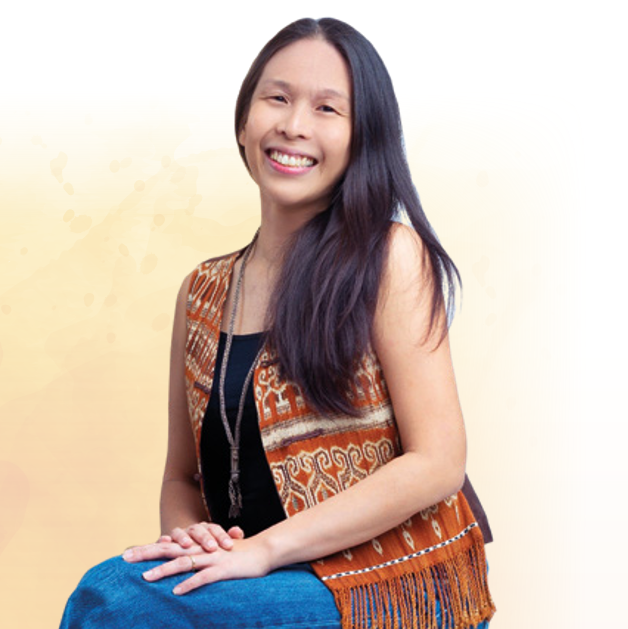
22 Mar 2022
ASEAN Identity and Community Building, Culture
Elaine Chan
Southeast Asia’s enduring tradition of handwoven textiles took centre stage at the recently held TENUN Fashion Week. This inaugural event was held online in the trend of digital fashion weeks as a response to COVID-19 restrictions. It was organised by the ASEAN Handicraft Promotion and Development Association (AHPADA) and Tanoti—a Malaysian accredited socialenterprise dedicated to heritage craft preservation, women empowerment, and rural community building. The event was supported through the Ma

